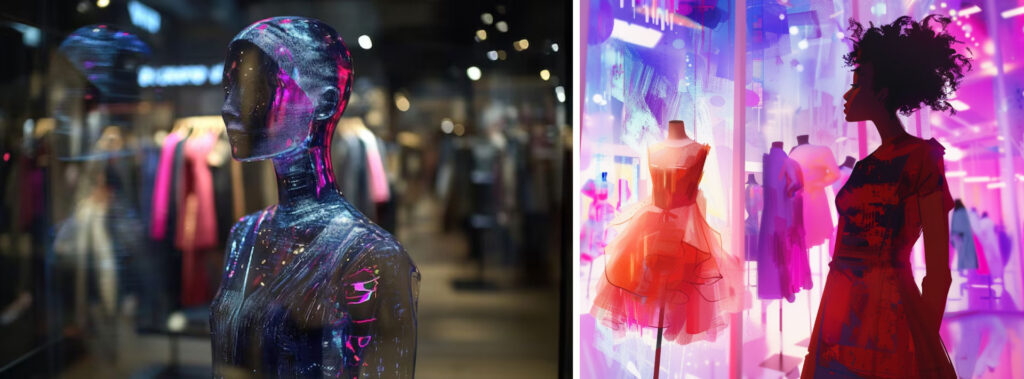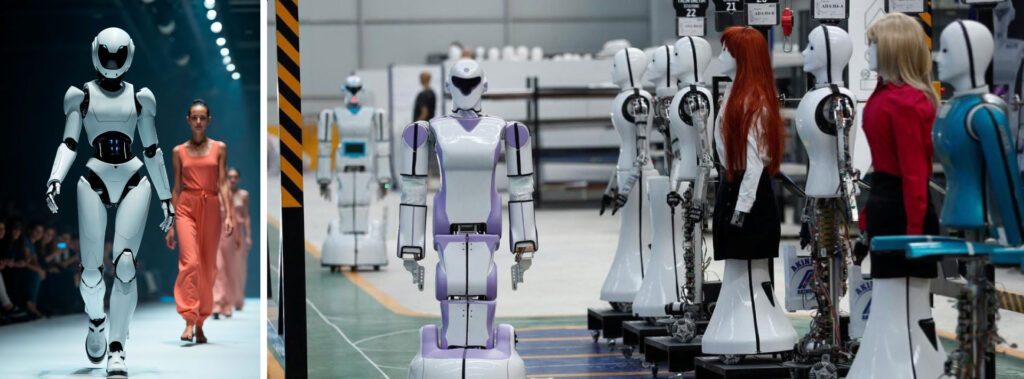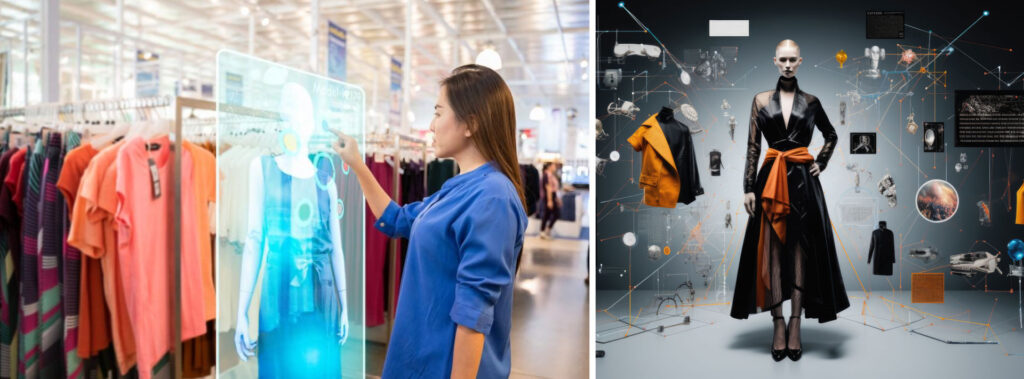Explore the ethical dilemmas of AI-powered wearables—where innovation meets privacy. Learn how fashion brands can balance data, design, and trust with Deepwear’s experts.
People already surrender large parts of their private lives online — through apps, devices, and Terms and Conditions they rarely read. Every click, heartbeat, and step can be tracked, stored, or sold. In this landscape, privacy isn’t lost all at once; it’s traded gradually, often in exchange for convenience or personalization.
Now, artificial intelligence is taking that trade directly to our bodies.
AI-powered wearables — clothing and accessories that sense, learn, and respond — blur the line between personal expression and digital surveillance.
A recent study published by the National Library of Medicine (Radanliev, 2024) on privacy, ethics, transparency, and accountability in AI systems for wearable devices warns that the rapid rise of such technologies raises unresolved questions about who truly controls personal data, and whether consent still means anything when algorithms evolve faster than regulation.
For the fashion industry, this convergence of design, data, and AI opens up extraordinary creative opportunities — but also new ethical risks.
In this blog we cover:
- How AI-powered wearables are transforming fashion while raising new ethical and privacy dilemmas.
- The role of personal data in design and how it can both enhance and complicate wearable technology.
- Challenges around data transparency and consent, bias, and surveillance in AI-assisted fashion.
- How human creativity and oversight remain essential in the age of generative AI.
- How consumer trust in fashion and craftsmanship remain ultimate differentiators for forward-looking brands.

Navigating Ethics in AI-Powered Wearables
As wearable technology becomes increasingly integrated with AI and machine learning, fashion brands face a new set of ethical responsibilities. It’s no longer just about fabrics, materials, or sustainability, it’s also about the data embedded in the clothing, the transparency of algorithms, and the fairness and inclusivity of design decisions.
The following five areas highlight the key ethical challenges brands must address to ensure their AI-powered wearables are not only innovative, but responsible and human-centered:
1. Fashion’s New Material: Personal Data
In AI wearables, fabric isn’t the only thing being stitched together — so are data points.
Sensors embedded in clothing can monitor temperature, heart rate, posture, and even emotion. This data powers machine learning systems that adjust performance, predict comfort, or suggest purchases.
But the same data that personalizes can also profile. Health and behaviour data could be used for targeted marketing, employment screening, or surveillance by corporate or state entities.
In fashion, the ethical question isn’t whether data collection should exist — it already does — but how far brands are willing to go with it.
Curious how data-driven design can elevate your next collection? Explore how Deepwear integrates technology with expert craftsmanship.
2. Transparency and Consent: Fashion’s Accountability Gap
Transparency has always been central to sustainable fashion — from fair wages to material sourcing. When products themselves become intelligent, that transparency must also extend to data flows.
Brands should prioritize:
- Informing users how their biometric or behavioural data will be used.
- Granular, revocable consent that’s easy to understand.
- Explainable AI systems rather than black-box algorithms.
Without these measures, AI-powered wearables risk the same opacity as Big Tech, where “user agreements” often hide asymmetrical power dynamics.

3. Bias and Inequality: When Algorithms Decide What Fits
Bias in AI is not abstract — it’s a measurable design flaw. In fashion, inequities in datasets can have physical consequences.
If a smart garment’s AI is trained predominantly on certain body types or skin tones, its feedback and fit will privilege those groups. Bias in AI design becomes bias in fashion.
To counter this, Deepwear emphasizes ethical data sourcing: datasets must reflect real diversity and fairness before shaping design decisions.
4. Ownership and Surveillance: Who Controls the “Smart” in Smart Fashion?
Connected clothing complicates ownership. If a jacket senses and transmits data, who owns that information — the wearer, the brand, or the tech provider?
Unregulated data aggregation transforms garments into potential surveillance tools — wearable nodes in a larger information economy.
Deepwear approaches this frontier with responsible data stewardship. Sustainability isn’t just about materials or labor — it also includes the ethical handling of the data your wearables generate.

5. Designing for Ethical Intelligence
The fashion industry has advanced in environmental and labor ethics. AI-powered wearables demand a similar commitment to digital ethics.
Principles for ethical design include:
- Explainable AI: Users understand how decisions are made.
- Bias mitigation: Datasets and models are evaluated for fairness.
- Consent-aware systems: Users maintain control over their data.
Forward-thinking brands integrate these principles from concept to post-sale. At Deepwear, this is the evolution of sustainable fashion: extending care beyond the supply chain to the data chain, ensuring that every wearable is ethical, transparent, and human-centered.
The Human Element: Re-Defining Craft in the Age of AI
AI was introduced as an assistive tool — a way to make processes faster, smarter, and more efficient. But as with most technologies, what began as a solution soon created a new set of problems. Some call it a solution to a problem we didn’t have — and in fashion, that paradox is becoming more visible.
Big tech’s growing influence over AI design tools and wearable technology is driven as much by profitability as by progress. Investors are pushing for wider adoption because AI isn’t yet as profitable or indispensable as promised. Meanwhile, its most effective uses such as facial recognition and predictive analytics — have already drawn concern for their role in mass surveillance, profiling, and state control.
In everyday fashion work, the real question isn’t if AI will replace humans — it’s how much oversight will remain when it does.
The truth is:
- AI systems can generate patterns, optimize sizing, and predict trends — but they still rely on human direction, taste, and cultural sensitivity.
- Generative AI often lacks context and empathy, qualities that define meaningful design.
- Without creative oversight, automation risks producing homogenized aesthetics detached from local identity or craftsmanship.
AI, then, isn’t replacing creativity — it’s reshaping what creativity requires. Designers, patternmakers, and sourcing teams are now asked to become tech-literate interpreters, ensuring algorithms enhance rather than erase artistic intent.
At Deepwear, we see AI as a collaborator, not a replacement; a tool that can amplify craft if guided responsibly.
- It can streamline sampling, forecast demand, and visualize collections.
- But it still needs human ethics, judgment, and artistry to make meaning out of data.
Ultimately, innovation that forgets its human roots isn’t innovation — it’s automation for automation’s sake.The challenge for fashion today is not to resist technology, but to redefine the value of human creativity within it.

Consumer Trust as Competitive Advantage
Here’s another issue: AI may be fast and efficient, but it’s not always truthful. Many large language models (LLMs) are prone to hallucinations, generating information that sounds credible but is factually wrong. The problem is not just technical — it’s psychological. People tend to trust what aligns with their beliefs, a form of confirmation bias that AI systems can inadvertently reinforce.
In the context of AI-powered wearables, this overtrust can be dangerous. When users believe algorithmic insights are inherently objective, they risk surrendering their critical thinking to opaque systems. This false sense of security raises an ethical question: who should we trust — the machine, the maker, or the message?
In fashion, consumer trust has always been earned through transparency, quality, and integrity. As AI becomes more integrated into product design and data analysis, brands must preserve that trust not through more automation, but through accountability.
For wearable tech companies and fashion manufacturers, this means:
- Disclosing how AI tools are used — whether in design, sourcing, or personalization.
- Clarifying data boundaries — ensuring consumers know what’s collected, why, and for how long.
- Embedding human oversight — maintaining ethical checks in every AI-assisted workflow.
- Committing to explainability — users should be able to understand, question, and control algorithmic outputs.
Trust is no longer just a moral value, it’s a market differentiator. The brands that win in this new landscape will be those that combine technological innovation with ethical consistency.
The Future of AI–Fashion Collaboration
The next frontier of fashion and AI isn’t about replacing human creativity — it’s about refining how humans and machines collaborate. As algorithms begin to generate fabrics, patterns, and even sustainability reports, the role of human designers and sourcing experts becomes even more vital. They interpret what AI can’t: culture, context, and conscience.
At Deepwear, this future is not theoretical — it’s operational. The integration of AI-assistance is approached with restraint and responsibility. Deepwear’s model has always been rooted in transparency, fairness, and sustainable craftsmanship, values that remain constant even as tools evolve.
Where others chase automation for its own sake, Deepwear prioritizes:
- Responsible innovation, ensuring every tool serves both creativity and compliance.
- Human-centered oversight, with experts validating outcomes AI can only approximate.
Ethical supply chain alignment, balancing digital efficiency with the dignity of real workers.

What Are the Ethical Challenges of AI-Powered Wearables in Fashion?
AI-powered wearables collect sensitive data that can enhance personalization—but also risk privacy breaches, bias, and surveillance. Fashion brands must ensure transparency, inclusivity, and explainable AI to protect users and maintain trust. Deepwear guides brands in balancing innovation with responsibility through ethical sourcing, data integrity, and human oversight.
Beyond the Algorithm
AI may accelerate fashion’s future, but it doesn’t define it. What defines it is how responsibly we use it — not as a substitute for human judgment, but as an instrument to amplify it.
As the industry experiments with AI-powered wearables, the line between innovation and intrusion will grow thinner. That’s why the question isn’t how intelligent machines can become, but how conscientious we remain.
Ready to innovate responsibly with AI-powered fashion?
Book a strategy call with Deepwear’s consultants or explore our ethical tech and sourcing solutions today.